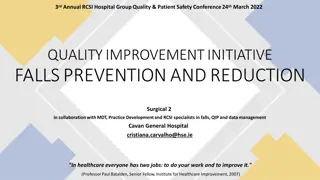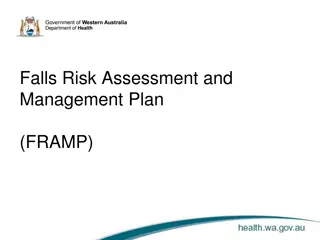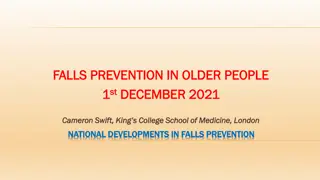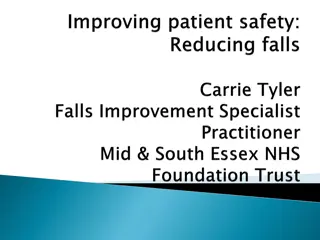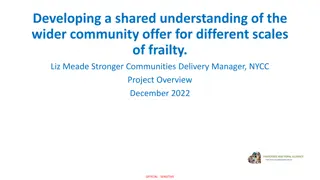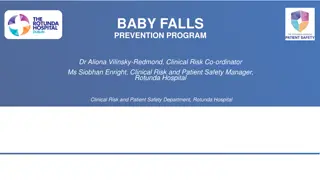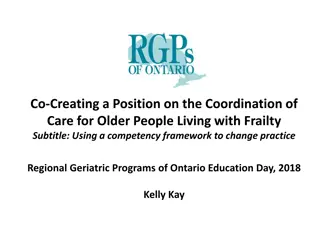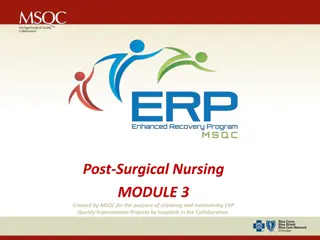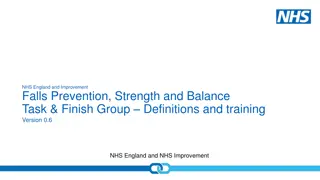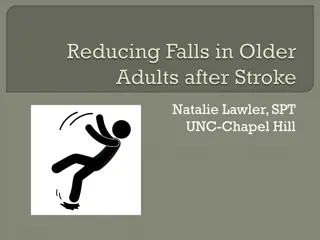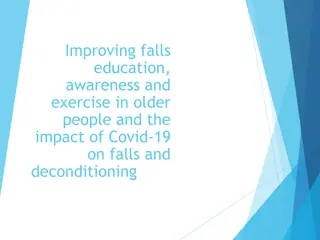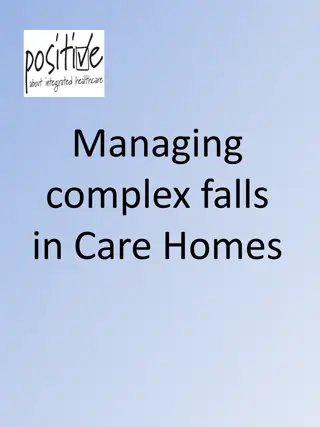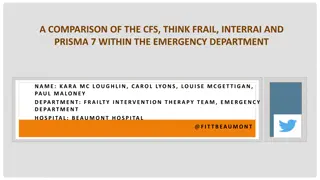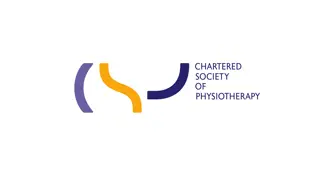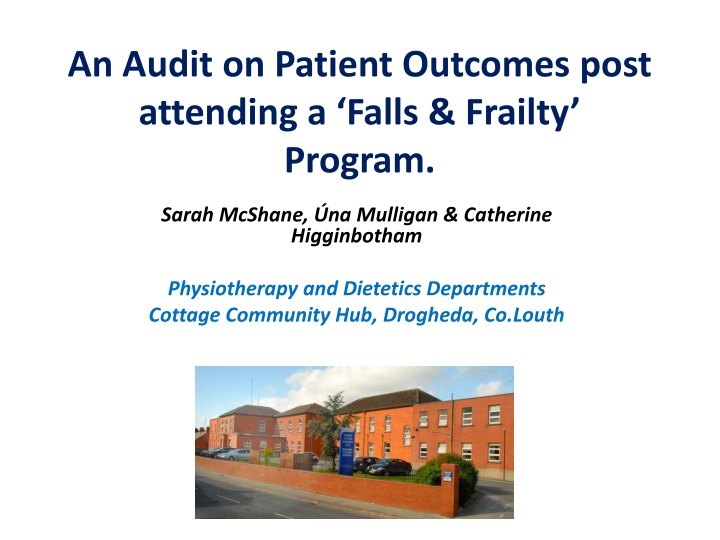
Improving Patient Outcomes After Falls & Frailty Program
Fragility fractures in older adults have significant impacts, but with targeted exercise and nutritional support, patient outcomes can improve. This audit post-attendance of a falls & frailty program reveals positive changes in falls risk, functional ability, and muscle strength for participants. Insights from patient profiles and conclusions shed light on the effectiveness of such programs for a frail older cohort.
Download Presentation

Please find below an Image/Link to download the presentation.
The content on the website is provided AS IS for your information and personal use only. It may not be sold, licensed, or shared on other websites without obtaining consent from the author. If you encounter any issues during the download, it is possible that the publisher has removed the file from their server.
You are allowed to download the files provided on this website for personal or commercial use, subject to the condition that they are used lawfully. All files are the property of their respective owners.
The content on the website is provided AS IS for your information and personal use only. It may not be sold, licensed, or shared on other websites without obtaining consent from the author.
E N D
Presentation Transcript
An Audit on Patient Outcomes post attending a Falls & Frailty Program. Sarah McShane, na Mulligan & Catherine Higginbotham Physiotherapy and Dietetics Departments Cottage Community Hub, Drogheda, Co.Louth
Background/Introduction: Fragility or osteoporotic fractures are common, especially in older age, and have a huge personal impact and economic cost to society (1).The absolute number of fragility fractures presenting departments, and requiring admission, increased by 30% between 2000 and 2014 combination with nutritional education and intervention has an important role in the management of osteoporosis, promoting bone and muscle strength and reducing falls risk (1 & 3). to Irish emergency (2). Physical exercise in Aims/Objectives: The aim of this audit was to establish if there was improvements in participates falls risk and frailty post completion a 6 week course of exercise prescription and nutritional support.
Patient Profiles: The average age of the participates was 80 years, with the breakdown of 1 male and & 7 female patients. All 8 patients were at risk of fragility fracture and presented as a falls risk on at least one of the physiotherapy outcome measures. 7/8 patients had experienced a fragility fracture in the past. 6 patients had a SARC-f score 4, and therefore at risk of sarcopenia. The average pre-class BMI was 26.6kg/m2. Results: 7/8 patients were available for review post class attendance. 6/7 patients made improvements in their berg scores while one remained the same. 7/7 patients had improved functional ability as measured in a 5-STS test. 5/7 patients made improvements in TUG scores indicating a decreased risk of falling, the remaining two patients maintained their score times and were in fact low risk of falling with the same. 6/7 patients had an improved handgrip strength in at least one hand, with 3/7 improved in both hands, 2/7 continued to have a SARC-F score 4. Patients nutritional status remained stable with a weight loss or gain of an average < 1kg over the 6-week period and an average BMI post class of 26.5kg/m2.
Conclusions: Participation in a frailty program yielded improvements or baseline maintenance for all patients with respect to functional ability, muscle strength, nutritional status along with patient confidence and fear of falling. Spread: The improvements observed as part of the pilot study acts as support for the continued running, of a multi- disciplinary team led program, of this type in the future. This type of patient management program was observed to have may objective and subjective successes for this frail older cohort which acts as further support for its operation. 1.National Osteoporosis Society (2019) Strong, Steady & Straight: NOS Exercise and Osteoporosis Consensus Statement, UK. 2. Kelly, M.A., McGowna, B., McKenna, M.J., Bennett, K., Carey, J.J., Whelan, B. and Silke, C. (2018) Emerging trends in hospitalization for fragility fractures in Ireland. Irish Journal of Medical Science, 187 (3), pp. 60-608. 3. Deutz NE et al. Protein intake and exercise for optimal function with aging: Recommendations from the ESPEN Expert Group. Clin Nutr. 2014:33:929-36. 4. Strong, Steady and Straight; An Expert Consensus Statement on Physical Activity and Exercise for Osteoporosis. 2019.^ National Osteoporosis Society. Available at: <https://www.bgs.org.uk/sites/default/files/content/attachment/2019-02-20/FINAL%20Consensus%20Statement_Strong%20Steady%20and%20Straight_DEC18.pdf> [Accessed 18 October 2021]. 5.0 NCOA Evidence-Based Program: Otago Exercise ProgramAvailable from: https://www.ncoa.org/uncategorized/evidence-based-program-otago-exercise-program/ (accessed 18.10.2021). 6 Food Safety Authority of Ireland(2021) Scientific Recommendations for Food-bases Dietary Guidelines for Older Adults in Ireland.


